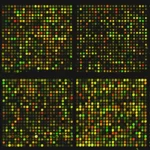
The Ultimate Guide to Bioinformatics Tools: How to Choose, Evaluate, and Optimize for Research Success
September 10, 2023Mastering Bioinformatics: Proven Strategies for Efficient Tool Selection and Evaluation
The fusion of biology, computer science, and statistical analysis has given rise to bioinformatics, an interdisciplinary field critical for interpreting ever-growing biological data. Advanced sequencing technologies keep adding to this data deluge, making the need for robust bioinformatics solutions more pressing than ever. This handbook is designed to help you navigate the complexities of selecting, assessing, and fully utilizing bioinformatics tools to accelerate your research.
Selecting the Ideal Bioinformatics Solution for Your Research Needs
Before diving into the ocean of bioinformatics tools, it’s crucial to crystallize your research objectives. A clear research goal guides you toward the most relevant data types and analytical methods.
1. Clarify Your Research Goal:
Having a precise research objective not only focuses your efforts but also helps you pinpoint the data categories and analysis strategies you’ll need.
2. Survey Available Tools:
Bioinformatics offers a varied toolkit, each specialized for tasks such as sequence mapping, gene activity profiling, or protein structure analysis. Being well-informed about available tools aids in making a knowledgeable choice.
3. Examine Efficiency Ratings:
While the tool’s popularity may offer some insights, your primary focus should be on performance metrics, which are often detailed in scientific publications.
4. Coding Language:
Familiarize yourself with the programming languages the tool utilizes, such as C++, Java, or Python, to gauge its operational speed and efficiency.
5. Consult Experienced Colleagues:
Conversations with seasoned bioinformatics experts can provide invaluable insights to inform your final tool selection.
Criteria for Assessing Bioinformatics Solutions
Assessing a tool’s efficacy is multi-dimensional and calls for several key considerations:
A powerful tool with a complex interface can bottleneck your research. Prioritize tools with straightforward, intuitive user interfaces.
2. Quality Assurance:
Verify the tool’s reliability and precision by looking at user reviews and scholarly articles.
3. Speed and Data Handling:
Ensure that the tool can swiftly process and manage vast bioinformatics datasets.
4. Collaboration-Friendly:
Given today’s interconnected research environment, opt for tools that facilitate easy sharing of data and findings.
5. Researcher Autonomy:
The tool should empower you to explore and analyze data independently, freeing you from the need for continual technical assistance.
Verifying the Precision of Bioinformatics Tools
Ensuring that a tool is accurate is fundamental for meaningful research outcomes. Here’s how to make sure:
1. Opt for Relevant Metrics:
Start with basic metrics like sensitivity, specificity, and general accuracy to evaluate the tool’s alignment with your research.
2. Review Comparative Studies:
Peer-reviewed performance evaluations can give you an unbiased view of how a tool performs against its competitors.
3. Cross-Validation:
Utilize auxiliary tools such as Ramachandran to cross-validate your analyses and models.
4. Standardized Testing:
Subject the tools to rigorous tests using both real and simulated datasets to assess their performance.
5. Expert Peer Reviews:
Look for citations in scientific literature and endorsements by leading professionals in the field as indicators of a tool’s precision and reliability.
Practical Examples: Multi-Metric Evaluation of Tools
AI-Driven Bioinformatics Predictors:
Their efficacy has been rigorously assessed based on diverse performance indicators.
Gene Activity Analysis Software:
Comparative studies have examined these tools using performance metrics such as sensitivity and specificity.
Sequence Comparison Programs:
Scholarly papers have scrutinized the computational speed and data accuracy of various sequence matching tools.
Ramachandran’s Model Validation:
Widely endorsed for its capability to manage huge datasets and validate complex models.
By systematically selecting and evaluating your bioinformatics tools, you’ll be better positioned to conduct research efficiently and produce reliable results. As you keep abreast of evolving technologies and best practices, you’re setting the stage for pioneering contributions to genomics, transcriptomics, metabolomics, and more.
Keywords: Bioinformatics, Selection, Research, Coding Languages, Performance Metrics, Data Processing, Genomics, Assessment Criteria, Validation Methods.


















